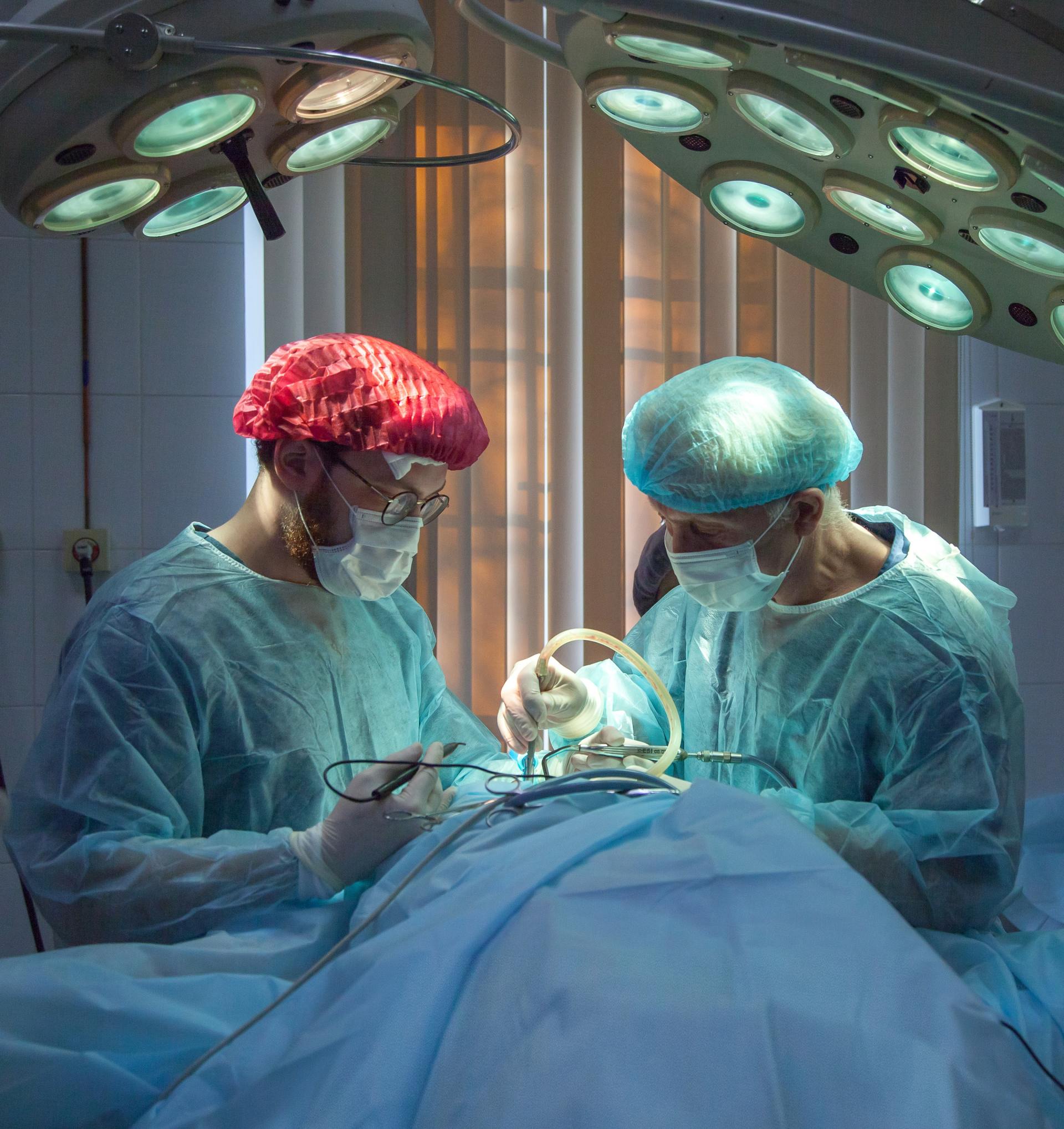Occam's Razor
Veronika Valdova • February 13, 2020
Published December 14, 2016
Occam's (or Ockham's) razor is a principle attributed to early medieval logician William of Ockham (1287–1347). He used the principle to justify many of his conclusions including his statement "God's existence" that "cannot be deduced by reason alone". The original principle as formulated by Ockham says:
"Pluralitas non est ponenda sine neccesitate"
(Entities should not be multiplied unnecessarily)
Ockham's razor
"Whenever possible, substitute constructions out of known entities for inferences to unknown entities." (Bertrand Russell)
"Scientists must use the simplest means of arriving at their results and exclude everything not perceived by the senses." (Ernst Mach, Principle of Economy)
"We could still imagine that there is a set of laws that determines events completely for some supernatural being, who could observe the present state of the universe without disturbing it. However, such models of the universe are not of much interest to us mortals. It seems better to employ the principle known as Occam’s razor and cut out all the features of the theory that cannot be observed." (Stephen Hawking, A Brief History of Time)
Many scientists have adopted Occam's Razor. German rationalist philosopher, Gottfried Wilhelm Leibniz (1646-1716) reinvented the same principle in his Identity of Indiscernibles. Natural philosopher Isaac Newton (1642-1727) in his Principia: the mathematical principles of natural philosophy stated the rule:
"We are to admit no more causes of natural things than such as are both true and sufficient to explain their appearances." (Isaac Newton, Newton's Principia)
"Whenever possible, substitute constructions out of known entities for inferences to unknown entities." (Bertrand Russell)
"Scientists must use the simplest means of arriving at their results and exclude everything not perceived by the senses." (Ernst Mach, Principle of Economy)
"We could still imagine that there is a set of laws that determines events completely for some supernatural being, who could observe the present state of the universe without disturbing it. However, such models of the universe are not of much interest to us mortals. It seems better to employ the principle known as Occam’s razor and cut out all the features of the theory that cannot be observed." (Stephen Hawking, A Brief History of Time)
Did we forget these principles in clinical research?
A recent analysis by PAREXEL evaluated data on 38 Phase III trials from the period between 2012 and 2015 that failed to meet primary or secondary efficacy endpoints. These 38 trials summarily enrolled nearly 150,000 patients. (Phase III Trial failures: Costly, but preventable)
Darapladib (SB480848):
Phase I (12 studies, enrollment 283); Phase II (3 studies, enrollment 264); phase III (3 studies, enrollment 28,918); observational (1 study, 28855 subjects). GSK blockbuster hopeful darapladib had little effect on strokes, one of the key measures on that endpoint, and the drug failed to demonstrate greater efficacy than placebo [FierceBiotech, 2014].
Evacetrapib (LY2484595):
Phase I (20 studies, enrollment 953); Phase II (2 studies, enrollment 580); Phase III (4 studies, enrollment 12,604). According to the American College of Cardiology, evacetrapib is a third late failure in a class of cholesteryl ester transfer protein (CETP) inhibitors. These drugs are designed to disrupt the conversion of HDL cholesterol into LDL cholesterol. Another CETP inhibitor, torcetrapib, was abandoned after a phase 3 clinical trial because of increased risk of cardiovascular events and death. Dalcetrapib was stopped when a phase 2 clinical trial which failed to meet efficacy goals [AAC, 2016].
Losmapimod (GW856553):
Phase I (3 studies, enrollment 92); Phase II (5 studies, enrollment 908); Phase III (1 study, enrollment 3,503). GSK’s decision to terminate losmapimod development for COPD came in January 2016, following a long and hard look at Phase II data. Termination of the losmapimod heart attack program came after the drug failed to demonstrate efficacy in a Phase III trial. Losmapimod is a selective inhibitor of p38 mitogen-activated protein kinases, which are mediators of acute inflammation. According to CT.gov, the drug was tested for glomerulosclerosis, COPD, acute coronary syndrome, and major depression. [Biospace, 2016]
Otamixaban (XRP0673):
Phase I (2 studies, enrollment 73); Phase II (2 studies, enrollment 4,188); Phase III (1 study, enrollment 13,220). In Phase I, otamixaban was studied on patients with renal and hepatic impairment, respectively. The Phase III study failed to show the superiority of otamixaban over a combination of heparin and eptifibatide (standard of care) in moderate- to high-risk patients. Moreover, otamixaban doubled the risk of major or minor bleeding and thrombotic procedural complications. [PharmaTimes, 2013].
Serelaxin (RLX030):
Phase I (1 study, 36 patients); Phase II (11 studies, enrollment 810); Phase III (3 studies, enrollment 10,788). The FDA granted breakthrough status to serelaxin in June 2013. A year later, the drug was rejected by both EMA and the FDA. The project continues, however, and the latest study RELAX-REPEAT, is now again recruiting patients with chronic heart failure. [Medscape, 2016]
Aclerastide (DSC127):
Phase I (0/0); Phase II (1 study, enrollment 78); Phase III (3 studies, enrollment 1,255). In November 2015, an assessment of aclerastide found the drug did not meet its efficacy endpoints of healing diabetic foot ulcers. Consequently, Derma Sciences halted the clinical trial and is terminated the aclerastide program, and its CEO Edward Quilty resigned. [BusinessWire, 2015]
Aleglitazar:
Phase I (8 studies, enrollment 267); Phase II (6 studies, enrollment 899); Phase III (8 studies, enrollment 9,838). Roche has announced the halting of a phase 3 trial of aleglitazar due to failure to meet efficacy endpoints and safety concerns, specifically PPAR class-related toxicity such as bone fractures, heart failure, and gastrointestinal bleeding. Aleglitazar turns on peroxisome proliferator-activated receptor (PPARs), receptors that are known to be problematic. Dr. Bernard Charbonnel in a piece on PPARs noted that more than 50 such drugs had failed clinical trials due to safety concerns. After the Phase III failure of another three PPARs, aleglitazar, muraglitazar and tesaglitazar the whole class of drugs appears to be doomed. [FierceBiotech, Medscape, 2013]
Basal insulin Peglispro (LY2605541):
Phase I (14 studies, enrollment 480); Phase II (2 studies, enrollment 269); Phase III (10 studies, enrollment 6087). In December 2015, Eli Lilly announced that it will cease development of basal insulin peglispro, a potential treatment for type 1 and type 2 diabetes [Lilly press release, 2015]
"While we are encouraged by the efficacy data we observed for BIL, we know that moving forward would have required a significant amount of time and investment with no assurance that we would find conclusive answers," said Enrique Conterno, president, Lilly Diabetes.
Saxagliptin:
Phase I (18 studies, enrollment 641); Phase II (5 studies, enrollment 784); Phase II/III (1 study, enrollment 450), Phase III (38 studies, enrollment 18,216) Phase IV (37 studies, enrollment 26229). SAVOR was a large randomized, double-blind, placebo-controlled Phase 4 study in patients with T2DM at high risk of CV disease. The primary objective of the study was to evaluate the CV safety of saxagliptin. SAVOR, showed an association between saxagliptin treatment and an increased risk for hHF; however, a mechanism to account for the hHF finding has yet to be determined [AstraZeneca Advisory Committee Briefing Document, 2015]. FDA safety warning followed in February 2014.
Alisertib (MLN8237):
Phase I (32 studies, enrollment 1234); Phase I-II (7 studies, enrollment 605); Phase II (17 studies, enrollment 1440); Phase III (1 studies, enrollment 271). Japanese drug-maker Takeda tested Alisertib for the treatment of a variety of cancers, including peripheral T-cell lymphoma, acute myeloid leukemia, small-cell lung carcinoma, solid tumors, and others. The program for lymphoma was halted after the drug failed to show any benefit in progression-free survival. Takeda acquired the program through the acquisition of Milennium Pharmaceuticals in 2008. [PharmaTimes, 2015]
Cabozantinib:
Phase I (19 studies, enrollment 950); Phase I/II (3 studies, enrollment 184); Phase II (37 studies, enrollment 2840); Phase III (5 studies, enrollment 2887), Phase IV (2 studies, enrollment 1188); Phase not stated (5 studies, enrollment 121); Observational (1 studies, enrollment 50). In 2014, following phase III failure of its drug against advanced prostate cancer, Exelixis had to ax about 70% of its workforce. In March 2016, French drug-maker Ipsen bought the drug with a hope that it may treat kidney and liver cancers. The drug is already approved for severe thyroid cancer (FierceBiotech).
Dacomitinib (PF00299804):
Phase I (18 studies, enrollment 591); Phase I/II (4 studies, enrollment 593); Phase II (16 studies, enrollment 992); Phase III (3 studies, enrollment 2,037); Phase not stated (1 studies, enrollment 6). In January 2014, Pfizer announced that dacomitinib failed in two Phase III studies. Dacomitinib irreversibly inhibits enzyme pan-HER kinase in patients with advanced non-small cell lung cancer. Dacomitinib did not improve progression-free survival when compared with Roche's Tarceva (erlotinib) and placebo, respectively. Research for the treatment of non-small cell lung cancer with specific mutations continues. [PharmaTimes, 2014, Cancer Therapy Advisor, 2016]
Enzastaurin (DB102, formerly LY317615 HCl):
Phase I (9 studies, enrollment 280); Phase I/II (2 studies, enrollment 137); Phase II (35 studies, enrollment 2,595); Phase III (2 studies, enrollment 1,106). In 2013 Eli Lilly stopped on development of enzastaurin, which failed to improve disease-free survival in patients with diffuse large B-cell lymphoma. Enzastaurin is a serine/threonine kinase inhibitor of the PKC beta and AKT pathways and has been studied for a range of solid tumors and hematological cancers. [Fierce Biotech, 2016]
Etirinotecan pegol (NKTR-102):
Phase I (2 studies, enrollment 57); Phase II (9 studies, enrollment 377); Phase III (2 studies, enrollment 1,202). The results of the BEACON trial failed to demonstrate improvement in survival and progressio-free survival when compared to active control in patients with advanced breast cancer. [PMLive, 2015]
Ganetespib + docetaxel (STA-9090):
Phase I (13 studies, enrollment 337); Phase I/II (6 studies, enrollment 434); Phase II (15 studies, enrollment 2,353); Phase II/III (1 studies, enrollment 385); Phase III (3 studies, enrollment 2,296). In October 2015, Synta Announced Termination of Ganetespib Phase 3 GALAXY-2 Trial in Lung Cancer because of futility. [Business Wire, 2015]
Lapatinib + Trastuzumab:
Phase 0 (1 study, enrollment 40); Phase I (19 studies, enrollment 1,564); Phase I/II (11 studies, enrollment 468); Phase II (51 studies, enrollment 3,888); Phase II/III (1 study, enrollment 697); Phase III (15 studies, enrollment 13,919); Observational (7 studies, enrollment 715). The results from the phase III ALTTO trial show no additional benefit for adding lapatinib (Tykerb) to trastuzumab (Herceptin) in the adjuvant treatment of HER2-positive breast cancer in terms of progression-free survival and overall survival. [The ASCO Post, 2014]
MAGE-A3:
Phase 0 (1 studies, enrollment 25); Phase I (11 studies, enrollment 353); Phase I/II (9 studies, enrollment 400); Phase II (10 studies, enrollment 664); Phase II/III (1 studies, enrollment 4); Phase III (2 studies, enrollment 3,629); Observational (1 studies, enrollment 983). GlaxoSmithKline invested high hopes and lot of fortune in the cancer vaccine MAGE-A3. The vaccine failed to meet efficacy endpoints for non-small cell lung cancer and then again for melanoma. GSK continues to search for a possible sub-population of cancer patients who might benefit from the therapy. [FierceBiotech, 2014]
Motesanib (AMG 706):
Phase I (19 studies, enrollment 781); Phase I/II (2 studies, enrollment 51); Phase II (17 studies, enrollment 1,617); Phase III (3 studies, enrollment 1,650); Observational (1 study, enrollment 50). Japanese pharmaceutical giant Takeda acquired the drug from AMGEN and tested in a series of trials for non-small cell carcinoma. Motesanib failed to meet efficacy endpoints and the trial was terminated in 2011. [In the Pipeline, 2015]
Onartuzumab (MetMab):
Phase I (4 studies, enrollment 59); Phase I/II (1 studies, enrollment 0); Phase II (7 studies, enrollment 1,141); Phase III (5 studies, enrollment 1,610). In March 2014, Roche oncology R&D arm at Genentech halted a Phase III study comparing MetMab with Tarceva. The drug failed to block metastasis in non-small cell lung cancer and the trial was halted for futility. [Fierce Biotech, 2014]
Ramucirumab:
Phase I (20 studies, enrollment 1,292); Phase I/II (2 studies, enrollment 204); Phase II (34 studies, enrollment 3,406); Phase II/III (1 study, enrollment 908); Phase III (12 studies, enrollment 7,785); Phase IV (1 study, enrollment 1,000); Expanded Access (2 studies, enrollment 0). In September 2013, Eli Lilly announced that its Phase III study for ramucirumab failed to meet its efficacy endpoints on progression-free survival in patients with metastatic breast cancer. Phase III study for ramucirumab in gastric cancer hit its primary and secondary endpoints. The announcement was followed by immediate drop in shares by more than 5%. [FierceBiotech, 2013]
Selumetinib + Dacarbazine:
Phase I (1 studies, enrollment 211); Phase II (3 studies, enrollment 783); Phase III (1 studies, enrollment 152). AstraZeneca acknowledged that its non-small-cell lung cancer (NSCLC) candidate selumetinib missed its primary endpoint in a Phase III trial assessing the drug with docetaxel. The combination failed to improve progression-free survival and overall survival compared with placebo. [GEN, 2016]
Trebananib + paclitaxel (AMG 386):
Phase I (11 studies, enrollment 453); Phase I/II (2 studies, enrollment 122); Phase II (15 studies, enrollment 3,208); Phase III (3 studies, enrollment 2,157); Expanded Access (1 study, enrollment 20). Following disappointing results, trebananib was terminated for ovarian cancer. This is a comment by Sean E. Harper, M.D., executive vice president of R&D at Amgen: [Amgen, 2014]
"While the overall survival results of the TRINOVA-1 study are disappointing, this study is the first of three Phase 3 trials designed to evaluate the safety and efficacy of trebananib in patients with ovarian cancer. We continue to explore the potential of trebananib's novel anti-tumor mechanism of action in other cancer settings"
Xilonix:
Phase III (2 studies, enrollment 1,076). The Phase III trial for oncology drug Xilonix had to be halted not because of safety or efficacy issues but because of a series of embarrassing errors and mishaps that made the study impossible to evaluate. The drug was tested for colorectal cancer. [FierceBiotech, 2015]
Vintafolide: Phase I (3 studies, enrollment 72); Phase II (6 studies, enrollment 458); Phase III (1 studies, enrollment 640). Merck & Co. and Endocyte announced that the Data Safety Monitoring Board for the PROCEED trial has recommended that the Phase III study be halted as vintafolide did not meet efficacy endpoints and failed to improve progression-free survival in patients with platinum-resistant ovarian cancer. [FirstWord Pharma, 2014]
Vosaroxin +cytarabine (Qinprezo):
Phase I/II (1 studies, enrollment 115); Phase II (1 studies, enrollment 61); Phase III (1 studies, enrollment 675); Expanded Access (1 studies, enrollment 17). Sunesis Pharmaceuticals announced disappointing results from its Phase III trial VALOR trial. The drug failed to improve overall survival in patients with acute myeloid leukemia. [Clinical Trials Arena, 2015]
Fluticasone furoate + vilanterol (Breo/Relvar):
Phase I (8 studies, enrollment 258); Phase II (7 studies, enrollment 877); Phase III (36 studies, enrollment 29,361); Phase IV (4 studies, enrollment 332). GlaxoSmithKline tested their new drug Breo to demonstrate improved survival compared to placebo. The SUMMIT trial missed efficacy endpoints and the program was halted. [PharmaForum, 2016]
Bitopertin (RG1678):
Phase I (2 studies, enrollment 71); Phase II (2 studies, enrollment 400); Phase III (4 studies, enrollment 2,450). Roche's Phase III failed to meet its primary endpoint, and the company was forced to halt the trial for futility. Bitopertin is a glycine transporter-1 inhibitor designed for the treatment of schizophrenia. Adding bitopertin to antipsychotics failed to improve persistent negative symptoms of schizophrenia as measured by PANSS (Positive and Negative Symptoms Scale) scores when compared to placebo. [PsychCentral, 2015]
Edivoxetine (LY2216684):
Phase I (16 studies, enrollment 362); Phase II (2 studies, enrollment 697); Phase II/III (3 studies, enrollment 1,101); Phase III (6 studies, enrollment 6,197). Eli Lilly's antidepressant candidate edivoxetine used as an add-on to a SSRI failed to meet its primary endpoint in three Phase III trials when compared to a SSRI combined with placebo. [GEN, 2013]
Pomaglumetad methionil:
Phase I (2 studies, enrollment 160); Phase III (2 studies, enrollment 432); Expanded Access (1 study, enrollment 16). In summer 2012, Eli Lilly wrote of another schizophrenia drug, pomaglumetad methionil. In the first two pivotal Phase III studie the drug did not show superiority to placebo. [GEN, 2013]
Solanezumab:
Phase I (1 studies, enrollment 130); Phase II (3 studies, enrollment 113); Phase II/III (1 studies, enrollment 210); Phase III (6 studies, enrollment 3,190). Drug designed to treat Alzheimer's disease, through targeting the amyloid plaque, failed a huge Phase 3 clinical trial. The announcement caused Eli Lilly's shares to drop 10.5 percent. [Bloomberg Gadfly, 2016]
Apremilast:
Phase I (8 studies, enrollment 398); Phase I/II (2 studies, enrollment 13); Phase II (25 studies, enrollment 2,047); Phase II/III (1 study, enrollment 15); Phase III (10 studies, enrollment 4,446); Phase IV (6 studies, enrollment 418); Observational (8 studies, enrollment 6875); not stated (3 studies, enrollment 45). In summer 2014, Celgene announced that apremilast failed a Phase 3 study in improving symptoms of patients with ankylosing spondylitis. [Xconomy, 2014]
Tabalumab:
Phase I (4 studies, enrollment 122); Phase II (8 studies, enrollment 866); Phase III (9 studies, enrollment 7,858). Lilly's two Phase III trials for tabalumab - ILLUMINATE I and II- did not meet primary endpoint and failed to measure up compared to existing therapies. The drug was designed to treat autoimmune diseases such as rheumatoid arthritis and lupus erythematosus. [FierceBiotech, 2014]
Vercirnon (Traficet-EN):
Phase I (2 studies, enrollment 54); Phase II (3 studies, enrollment 596); Phase III (4 studies, enrollment 1,492). Data from the SHEILD-1 study failed to meet the primary and secondary endpoints for the secondary treatment of patients with Crohn's Disease. [BioWorld]
Innovation always involves the risk of failure. It is an art to see what the data show, and what they don't, and which projections are the result of our wishful thinking or unsubstantiated assumptions. It may be just my impression that 14th-century logician William of Ockham whispers in my ear that entities shall not be multiplied unnecessarily.

Nařízení (EU) 2017/745 o zdravotnických prostředcích vstoupilo v platnost 26. května 2021. Platnost certifikátů vydaných podle stávajících směrnic vyprší nejpozději 24. května. Toto je třeba provést ve lhůtě, která odpovídá době nezbytné pro přezkoumání dokumentace a před vypršením platnosti současných certifikací. Česká republika stále nemá svůj oznámený subjekt. Jakmile dojde k akreditaci, bude ITC zavalen ohromným počtem nevyřízených podání v českém jazyce. Zajisdtěte si pomoc s podáním od týmu Arete-Zoe, který má s přípravou klinické dokumentace dle MDR bohaté zkušenosti.

The reduction of Czech-based Notified Bodies (NBs) leaves only one still pending accreditation and one in Slovakia that does accept submissions in Czech. The delay in accreditation has produced a significant backlog for submissions pending review and acceptance. The complexity of MDR is more stringent both for the preparers and the reviewers at the NB. This situation introduces many vulnerabilities into the submission process and represents substantial risk that can and should be minimized! The potential consequences of certification delays may be critical for some manufacturers. Is the cost penalty from delay because of necessary revision or rejection worth the minor economy of an in-house effort? Get your staff an assessment from a team with proven MDR success! Contact Arete-Zoe for a courtesy review of your situation and secure assistance that will reduce your risk! Stay agile, competitive, and profitable! What is the current situation? Regulation (EU) 2017/745 on medical devices (the Medical Device Regulation, MDR), which was adopted in April 2017, became applicable in the European Union on 26 May 2021, after a year delay due to Covid [i] . The certificates issued under the existing Directives for medical devices ( 93/42/EEC and 90/385/EEC ) will expire on or before May 24th, 2024. By then, all manufacturers who wish to keep their products on the market as medical devices, will have to upgrade their documents to the new standards. Previous documentation standards fall far short to the new requirements, placing significant burden on both the manufacturers and reviewers at the NB. Many previous submissions under MDR have been rejected based on documentation shortfalls within any of the many sections. When considered with the significant backlog, any aspect of documentation that requires revision only compounds certification delay and may jeopardize market access for many medical devices. All this needs to be done within a period that accounts for the time necessary for review prior to expiration of current certifications. Additionally, there is a significant bottleneck in submission processing due to the limited capacity of NBs in the EU due to a reduction in the number of designated NBs, increased number of products that are subject to review by NB due to reclassification, and increased complexity of MDR submissions compared to MDD/AIMD. The Czech Republic still does not have its own designated NB. Once accreditation occurs, the backlog of Czech language submissions will be overwhelming. The high number of returns and requests for amendments and revisions shall be expected in the initial months, slowing the process further for all. By May 2024, many manufacturers will find themselves in a situation when their products will no longer be marketable in the EU due to expired certificates and face additional consequences from having products purged from supply chain. Discussion MDR is here to stay. Czech Minister of Health MUDr. Vlastimil Válek in his introductory statement at the October 2022 AVDZP Conference [ii] stated that another postponement of MDR is out of question. While it is not in the interest of the European Union to be dominated by non-EU manufacturers, primarily from Asia, it is unlikely that the existing Regulation will be substantially changed to accommodate manufacturers’ concerns. Válek also reminded the public that the Wild East mentality with improvised devices throughout the hospital system that dominated the Czech market in the 1990s is gone and will not return. In short, MDR is a reality to which manufacturers will have to adjust. Notified bodies available to Czech manufacturers under MDR The number of EU NBs that are designated under MDR has increased to 34, half of which are located in Italy (9) and Germany (8). The remaining 17 are in Belgium (1), Croatia (1), Finland (2), France (1), Hungary (1), Ireland (1), the Netherlands (3), Norway (1), Poland (2), Slovakia (1), Slovenia (1), Spain (1) and Sweden (1) [iii] . European manufacturers can pursue certification of their products with any EU NB, with limitations to the type of product and the capacity and willingness of NBs to take on new clients. However, for access to the greatest number of NBs, the submission should be in English. Two Czech NBs were designated in Czechia under the 93/42/EEC (MDD): Institut pro testování a certifikaci, a.s. (ITC) and Elektrotechnický Zkušební Ústav, s.p. (EZÚ). Only one of them, ITC, is in the process for designation under MDR. However, the final scope of MDR codes ITC will be able to process has not been released. One additional institution, Czech Metrological Institute (CMI) is pursuing designation under MDR without prior history in medical devices under MDD or AIMD. The anticipated accreditation will take an additional year. Institut pro testování a certifikaci, a.s. (ITC), Czech Republic ITC’s current designations include Regulation (EU) 2016/425 Personal protective equipment, 2014/68/EU Pressure equipment, 2009/48/EC Safety of toys, Regulation (EU) No 305/2011 - Construction products and 2014/30/EU Electromagnetic compatibility. Designations under 93/42/EEC Medical devices and 98/79/EC In vitro diagnostic medical devices expired in May 2021 (MDD) and May 2022 (IVDD) [iv] . ITC will continue to perform audits under MDD during the transitional period until May 24, 2024. ITC submitted their application for designation under MDR on December 30, 2019. The Designating authority (ÚNMZ) verified completeness of the application and forwarded it to the European Commission in November 2020. The Commission designated the Joint Assessment Team in December 2020, which completed the evaluated in March 2021. On-site Joint Assessment was completed in June 2021. The official JAT report was issued in September 2021. ITC implemented CAPAs in fall 2021. In June 2022, designating authority ÚNMZ completed their review of CAPAs implemented by ITC and submitted it to the Joint Assessment Team for approval. In August 2022, ÚNMZ issued the final report. In September 2022, JAT issued its final assessment and a in October 23022, ITC underwent MDCG review and is now awaiting MDCG opinion that the notification can be accepted. The expectation is that ITC should be listed in the NANDO database by January 2023 for MDR [v] . According to Mgr. Jiří Heš, ITC will primarily serve Czech manufacturers who already are their clients and have certificates issued by them under MDD. New certificates under MDR won’t be issued in time and there will inevitably be a gap in coverage of products with valid MDD certification. [vi] ITC only began preparing application for designation under IVDR. Due to the extensive backlog of MDR certificates, it is reasonable to expect that the process of designation under IVDR will not be any faster. ITC currently does not offer any training on MDR for manufacturers or guidance on how to prepare submissions. The most significant thing any manufacturer can do for themselves is to ensure their submission is as appropriate as possible the first time. But they are left to their own means to sort out the transition from MDD to MDR. Without specific guidance from ITC on their expectations, there is significant risk from the ambiguity of the MDR Regulation itself. However, this risk can be reduced from experience from submissions under MDR to other NBs which will provide reasonable opportunity for a successful submission. Elektrotechnický Zkušební Ústav, s.p. (EZÚ), Czech Republic EZÚ’s current designations include Regulation (EU) No 305/2011 - Construction products and 2014/30/EU Electromagnetic compatibility. EZÚ won’t pursue designation under MDR. The activities EZÚ will continue include audit under MDD during the transitional period for 42 manufacturers whose certificates they serve, certification of quality management systems, and electrical safety. EZÚ also provides training on MDR for manufacturers and distributors [vii] . Czech Metrological Institute (CMI), Czech Republic CMI submitted their initial application in December 2020, a year later than ITC. The Joint Assessment Team evaluation (Article 39, paragraph 4 MDR) was completed in December 2021. In May 2022, CMI submitted their proposed CAPA plan. CMI strives to maintain the scope of devices included in their application (23 out of 44 basic codes and 18 out of 27 horizontal codes). The key requirement is to prove personnel availability for each code. CMI primarily intends to serve Czech manufacturers in Czech language, as only about a third of their reviewers have sufficient proficiency in English. CMI does not provide any training or guidance for manufacturers how to prepare documentation to pass their scrutiny. Certification of products on the Czech market There are over 400 Czech manufacturers listed in the database RZPRO holding nearly 6000 certificates that are currently valid. Of these, 4323 did not previously require the involvement of a NB (Class I). However, due to reclassification, some of these will require involvement of the NB under MDR, further stressing the throughput of the NB. Of the 1634 remaining certificates, 514 were issued by EZÚ and 391 by ITC. Another 133 MDD certificates were issued by other NBs that do not currently have MDR designation. The database also holds 2305 products other than Class I that do not have a NB listed. In total, ITC issued 541 certificates that are currently valid, including manufacturers from other countries. The database currently holds 630 valid certificates issued by EZÚ. All products certified by EZÚ will have to be recertified by another NB [viii] . The list of MDR codes that will be covered by ITC (or CMI, once designated) is not currently available. Mgr. Irena Storova (Czech State Institute for Drug Control) emphasized the quality of the MDR documentation as an essential condition required to avert a crisis. The current speed of issuing certificates by EU NBs is about 1.000 certificates a year. However, the anticipated need for medical devices in Europe is about 23.000 certificates issued by NBs over the period of 20 months, making the transition to MDR extremely challenging. The key problems are insufficient capacity of NB, partly due to accumulated backlog, partly due to increased complexity of MDR compared to MDD/AIMD, as well as inadequate preparedness of manufacturers to meet the new complex requirements of MDR [ix] . Experience of other EU NB shows exponential growth of applications and a serious lag in processing certificates. In February 2021, NBs received 1840 applications and processed 224 certificates. By October 2022, the number of applications grew to 8120, while the number of issued certificates was 1990 [x] . These numbers suggest further accumulation of backlog of unprocessed applications rather than catching up with the growing demand. The time to reach a Certificate according to MDR (MDR Quality Management System and Product certification) typically ranges from 13 to 18 months [xi] . This is consistent with ITC’s estimate that the review of a complete submission will take a year to issue a certificate. This means that all manufacturers who need their certificates renewed before the May 2024 deadline when they all expire will have to submit their applications before May 2023. Since ITC will only start accepting applications after the official MDR designation, it is safe to assume that all applications will be submitted in the period between the designation date and May 2023, creating a long backlog queue. To complicate the situation even further, manufacturers, whose MDR codes won’t be on ITC’s list, will have to look for a different NB to pursue their certificates. Czechia as a low price-point market The low-price level of devices on the Czech market complicates the transition to MDR even further. The system of defining reimbursements for medical devices is very rigid, and there are multiple pressures that keep prices down. These price controls conflict with increased costs associated with certification and recertification of products when considered with increased costs of energy, raw materials, transport, and labor. MUDr. Vlastimil Válek at the AVDZP Conference on October 13, 2022, stated that it is not in the interest of the European Union to allow non-EU manufacturers to dominate the EU market, and that there is an intrinsic value in self-sufficiency in times of crisis [xii] . The results from Survey on certifications and applications performed by MDCG & Stakeholders among NBs (51 NBs asked, 47 replies received) suggest that 60% of medical device clients are non-EU (10,913), compared to 7,143 EU clients [xiii] . Priority treatment for small business is not likely since SMEs are the majority of NB clients, both EU-wide and locally in the Czech Republic. In fact, as the threat for shortage of medical equipment becomes more urgent, policymakers might solve the crisis by prioritizing producers with high capacity, capable of meeting the demands of their respective health systems, as we have seen with the imports of medical equipment and protective materials during the Covid crisis. What is the risk to business due to delays in certification? The ability of NBs to process applications in a timely manner is an essential condition for the function of the medical device sector. This is directly influenced by the quality of manufacturers’ submission for certification. Manufacturers cannot legally keep their products on the EU market without valid certification. And, additional expenses will be incurred, if products have to be recovered from distribution chains due to delays in certification. Furthermore, this will create gaps in coverage, creating a void that can be filled by competitors. Extended periods of absence can stall otherwise good products and limit marketability once certification is finally obtained. Failure to obtain MDR certification for any portion of a product portfolio is an existential threat to any enterprise, potentially forcing reduction of staff, downsizing, making the enterprise vulnerable to competitors, or simply losing viability and going out of business. The absence of a feedback loop regarding the minutia of submissions’ content and format will cause additional delays and adjustments by the industry. ITC does not provide any MDR training and did not issue any guidance documents to facilitate successful submissions and reduce ambiguity relating to the novelty of the process. The first MDR certificate was issued in September 2019 by BSI [xiv] . This means that the cumulative experience in the industry among competition is significantly higher, placing Czech manufacturers 4 years behind other EU players. At present, Czech manufacturers have to rely on training provided by other NBs, industry consultants who rely on the same, in addition to feedback from their clients, and their own understanding of the Regulation and associated MDCG guidelines. Although CzechInvest does have a plan to start a comprehensive training program for manufacturers to facilitate the transition to MDR, the course has not started yet. The first students are expected to graduate in June 2024 [xv] . Learning curve by both newly designated NBs as well as manufacturers will inevitably affect the speed of processing, forcing reworks and amendments that would otherwise be avoidable. Securing consultancy with demonstrated MDR competency will remove substantial risk from the current situation. Recommendations What is the risk, and how does Arete-Zoe help your enterprise to mitigate such risk? The key to a successful MDR certification is a high quality, timely submission that complies with or better, exceeds minimum MDR requirements, ensuring timely processing and avoiding returns, requests for more information and outright rejections. It is important to note that the review and approval process depends on the understanding and application of MDR requirements by individual reviewers. Therefore, exceeding minimum requirements becomes a necessity for confident approval. The impact of additional information requests, although minor in terms of extra work, can be significant due to delays. Additionally, other manufacturers’ failed submissions in a long backlog of applications will continue to burden the system. The quality of the initial submission is essential to avoiding consequences in the transition to MDR and may be the single factor that keeps the business open. Manufacturers who have a fully trained in-house team already should still expect challenges in preparing MDR submissions themselves. The time to develop MDR expertise is very limited, considering the pressure to prepare the full documentation and submit it before May 2023. Even with a well-staffed team, the task can simply be overwhelming due to the sheer volume of material required in contrast to previous MDD/AIMD submissions. Arete-Zoe team has significant experience preparing clinical documentation for clients transitioning from MDD to MDR in both Czech and English and submissions through multiple NBs. Our exceptional success record with clinical documentation includes products that were previously rejected but passed with our assistance. We can help control the risk of failure or delay for our clients by providing the essential support you need to avert a avoidable delays in product certification. Arete-Zoe team can either prepare the full submission or augment your existing team with essential skillset your team might not have. References [i] https://www.ema.europa.eu/en/news/medical-device-regulation-comes-application [ii] Válek, V (2022). Introduction. AVDZP Conference 13/10/2022, Praha, Czech Republic. [iii] NANDO database https://ec.europa.eu/growth/tools-databases/nando/index.cfm?fuseaction=directive.notifiedbody&dir_id=34 [iv] NANDO database https://ec.europa.eu/growth/tools-databases/nando/index.cfm?fuseaction=directive.notifiedbody&dir_id=34 [v] Heš, J (2022). Implementace MDR: Kde jsme a kam směřujeme. AVDZP Conference 13/10/2022, Praha, Czech Republic. Institut pro Testování a Certifikaci. [vi] Heš, J (2022). Implementace MDR: Kde jsme a kam směřujeme. AVDZP Conference 13/10/2022, Praha, Czech Republic. Institut pro Testování a Certifikaci. [vii] Vlasák, M (2022). Dozorová činnost dle MDD. AVDZP Conference 13/10/2022, Praha, Czech Republic. Elektrotechnický zkušební ústav. [viii] Czech database of medical devices RZPRO https://eregpublicsecure.ksrzis.cz/Registr/RZPRO/ZdravotnickyProstredek [ix] Storova, I (2022). Problematika ukončení přechodného období MDR z pohledu SÚKL. AVDZP Conference 13/10/2022, Praha, Czech Republic. State Institute for Drug Control. [x] MDCG & Stakeholders (2022). Notified Bodies Survey on certyifications and applications (MDR/IVDR). 24/10/2022. European Commission. [xi] MDCG & Stakeholders (2022). Notified Bodies Survey on certyifications and applications (MDR/IVDR). 24/10/2022. European Commission. [xii] Válek, V (2022). Introduction. AVDZP Conference 13/10/2022, Praha, Czech Republic. [xiii] MDCG & Stakeholders (2022). Notified Bodies Survey on certifications and applications (MDR/IVDR). 24/10/2022. European Commission. https://health.ec.europa.eu/latest-updates/notified-bodies-survey-certifications-and-applications-2022-10-26_en?fbclid=IwAR3w3YH7UD2HBccQ6pBKWP3UlpgSnvQj9qFoNUeLIF-6ZWl8IOwP2Wx88Tk [xiv] BSI (2019). BSI certifies first product to the Medical Devices Regulation. 02 September 2019. BSI. https://www.bsigroup.com/en-GB/medical-devices/news-centre/enews/2019-news/bsi-certifies-first-product-to-the-medical-devices-regulation/ [xv] Hájek, J (2022). Národní plán obnovy. Komponenta 1. 4. Digitální ekonomika a společnost, inovativní start-upy a nové technologie. Program na podporu specifických systémových a produktových certifikací a souvisejícího vzdělávání. AVDZP Conference 13/10/2022, Praha, Czech Republic.

More than 500,000 medical technologies are available on the European market, from hospitals to community care settings and people's homes. The products range from syringes, pregnancy tests, and wheelchairs to X-Ray machines and body scanners, pacemakers, hip implants, and pharmacogenomic tests. The medical technology industry is the source of a constant flow of innovations. The sector spends about 8% of its sales on R&D. Typical product lifecycle is about 18 to 24 months when a new, improved version becomes available. In 2020, the European Patent Office (EPO) accepted nearly 14,200 patent applications in the medical technology sector, trumping pharmaceutical patents (8,500 applications) and biotechnology (7,200). European and U.S. entities filed almost 80% of the applications (38% EU and EEA, 39% U.S.) [ 1 ]. The European medical technology sector employs more than 760,000 people, mainly in Germany (210,000), the United Kingdom (102,800), Italy (94,000), France (89,000), Switzerland (63,000), and Ireland (40,000), accounting for 0.3% of total employment. In comparison, the European pharmaceutical industry employs around 795,000 people. These jobs reach a value-added of about €184,000 per employee. More than 33,000 medical technology exist in Europe, of which 95% qualify as small, medium, and micro-sized companies (SMEs). The majority of these enterprises employ less than 50 people [ 1 ]. In 2020, Europe had a positive trade balance in the medical technology sector of € 8.7 billion. Compared to 2019, the European trade balance dropped by 27.5% (€ 12 billion in 2019). The most important trading partners for Europe are the United States, China, Japan, and Mexico. Germany, Ireland, the Netherlands, Belgium, and Switzerland have the highest trade share, both within and outside the EU [ 2 ]. Until May 2021, the medical device sector was regulated by Medical Device and In Vitro Diagnostic Device Directives 93/42/EC and 90/385/EEC (MDD and IVDD), when the new Regulations replaced these: Medical Device Regulation (EU) 2017/745 (MDR) and In Vitro Diagnostic Device Regulation (IVDR) 2017/746 [ 3 ],[ 4 ]. The new regulations introduced numerous changes, including the reclassification of some devices, requiring additional obligations for manufacturers to comply with. About 85% of in-vitro diagnostic devices will now require Notified Body involvement, compared to ~20% under the IVDD. Existing MDD/IVDD certificates remain valid until May 2024. After this date, all devices on the EU market must comply with the new MDR/IVDR regulations [ 5 ]. For some manufacturers, the costs associated with keeping some of their devices on the market under MDR/IVDR may no longer justify the expense considering their profitability. Others may not be able to obtain new CE Mark certification in time due to decreased capacity of notified bodies. These factors combined are already reducing the number of devices on the EU market and limiting the certification of innovative products. The number of notified bodies available to review new certifications and recertifications dropped significantly under the MDR/IVDR. Of 51 notified bodies designated to MDD [ 6 ] and ten to AIMDD [ 7 ], only 29 obtained designation for MDR, of which seven operate in Germany, seven in Italy, and three in the Netherlands [ 8 ].

The Medical Device industry produces a vast number of products, ranging from bandages and surgical instruments to life function monitors to imaging technology. The technology currently in use varies from devices that have been in use for decades to highly innovative products. Innovations in the medical device field are frequent and typically incremental in response to feedback from physicians. Mordor Intelligence estimated the global Medical Devices market at USD 532.62 billion in 2021, growing at a CAGR of around 5.5%, to reach USD 734.39 billion in 2027 [1]. Fortune Business Insights projects the global medical devices market growth from $455.34 billion in 2021 to $657.98 billion in 2028 at a CAGR of 5.4%. This development follows a decline from 2020, when CAGR dropped to 3.7% due to the pandemic [2]. The key drivers of market growth include the rising prevalence of chronic diseases, increased disability throughout the population, technological advancements in medical devices, and population aging. The U.S. medical device market was valued at USD 186.5 billion in 2021 and is anticipated to exhibit a compound annual growth rate (CAGR) of 5.0% over the forecast period to reach USD 262.4 billion in 2028 [4]. The Medical Device sector is even larger than Biopharmaceuticals, that by comparison, employed over 224,000 people, earning $21.2 billion [3]. The rising prevalence of chronic diseases and the increasing geriatric population in the country are the key market drivers. The Medical Device industry has a significant impact on the U.S. economy and supports hundreds of thousands of jobs. More than 80 percent of U.S. medical device companies have fewer than 100 employees [5]. In 2020, the U.S. Medical Device industry supported over 329,000 jobs, with an annual payroll of $25.8 billion [3]. Employment and payroll for Medical Device Subsectors, 2020 ( SelectUSA ):

In the high consequence environment of pharmaceutical development, any assumption made earlier in the process can prove extremely costly if uncorrected once more information becomes available. From a business perspective, it is essential to create a safe avenue for communication of concerns regarding the drug candidate’s efficacy, safety, toxicity, or pharmacological function immediately as the researchers become aware of them.

Companies are growing in size due to acquisitions and mergers. Operations routinely span across geographical, jurisdictional, and cultural boundaries. The trend of industry consolidation continues in 2015 and 2016: the total number of deals flattened and remained even at around 600 mergers a year. Geographically, mergers, and acquisitions have been shifting from the U.S. to Western Europe. This shift is the result of transactions driven by the need to add complementary products to the core business areas and tax inversions.

Yes indeed. The reason is that critically important products such as active pharmaceutical ingredients and medical devices are manufactured in regions that are being shut down. Just-in-time supply chain and very few alternative suppliers for many off-patent generics make significant, long-term disruption much more likely.




